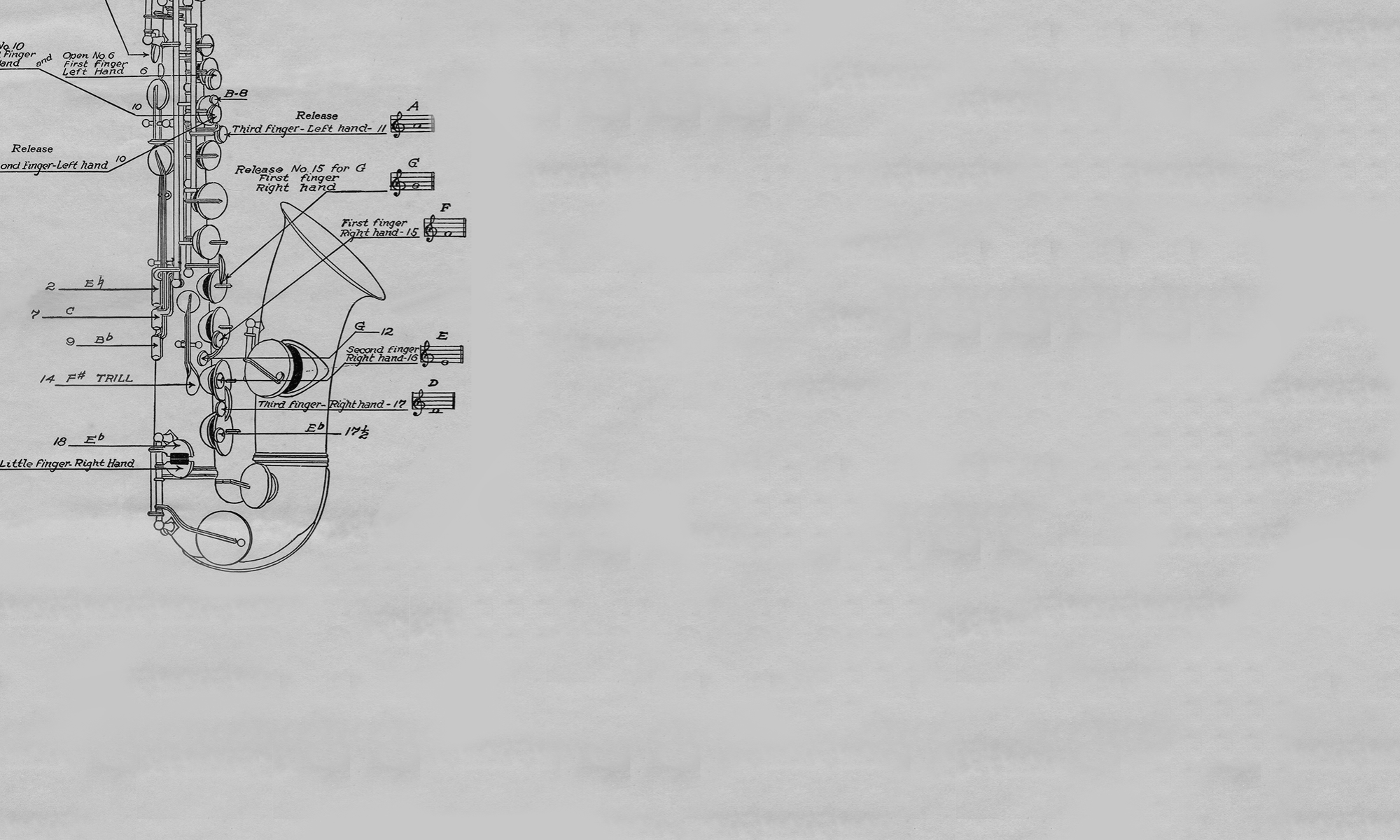from the University Bands Collection – Silver plated brass with gold bell
The C.G. Conn Company developed, produced and sold this F-Mezzo saxophone briefly between 1927 and 1930. The F-mezzo was the first Conn saxophone to feature same side bell keys later utilized for their alto and tenor horn models. Unlike the other members of the saxophone family, predominantly pitched in B-flat and E-flat, the company pitched the F-Mezzo saxophone in F. While this unique model utilized many of Conn’s innovative key mechanisms, for example roller keys, a crosshatched G-sharp key, and left-mounted bell keys; the F-Mezzo model never gained popularity with musicians and Conn discontinued it in 1930.
Throughout the twentieth century, musicians recognized the Conn Company for its innovative instrument designs. The company began building experimental saxophones in 1888 after its senior foreman, Ferdinand August Buescher (1861-1937), met Edward A. Lefebre (1834-1911). Lefebre played one of Adolphe Sax’s original saxophones with the Patrick Gilmore band beginning in 1873 and was considered at that time to be America’s greatest saxophonist. Buescher used Lefebre’s horn to model the Conn Company’s first saxophone design, which went into production in 1892. At this time, Conn was the only American music instrument company manufacturing saxophones. However, Buescher, who crafted Conn’s first saxophone design, was already selling his own saxophones that were based on Lefebre’s instrument from his home in 1890.
Buescher left the Conn Company in 1894 and formed the Buescher Manufacturing Company in Elkart, Indiana. The Buescher Company’s production initially focused on saxophones, but by 1920, the company was producing instruments predominantly for school bands. The Conn Company continued to focus its instrument production on professional musicians until the 1930s, when it also transitioned to more inexpensive instruments for America’s growing school band movement.
In 1919, Conn introduced the first saxophone with drawn tone holes. Previously, tone holes were created by soldering a ring of metal onto the instrument’s body and then cutting the tone hole through the body of the instrument. This new construction technique lowered the manufacturing costs and produced a stronger and more physically stable body for the instrument. That same year Edward Gulick developed the Conn microtuner for the saxophone. Its purpose was to provide a convenient means for adjusting the overall pitch of the instrument without having to move the instrument’s mouthpiece. Both innovations were used for Conn’s sax production until the early 1950s, but the microtuner was not used for the F-Mezzo soprano saxophone.
